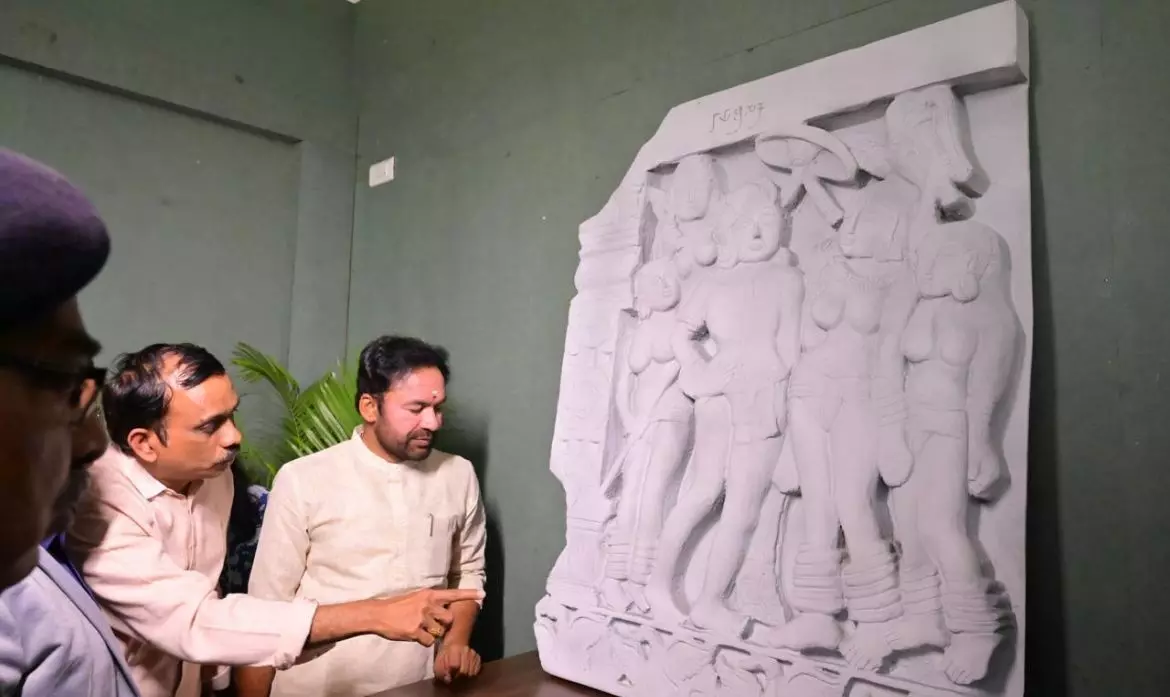Salar Jung opens India’s first National Museum of Epigraphy to preserve ancient scripts
Over a lakh inscriptions, including copper plate grants and stone inscriptions preserved by the ASI will be featured
By Anoushka Caroline Williams
Hyderabad: In a significant stride toward preserving and showcasing India’s rich epigraphic heritage, the country’s first digital National Museum of Epigraphy found its home in the Salar Jung Museum in Hyderabad.
Over a lakh inscriptions, including copper plate grants and stone inscriptions meticulously preserved by the Archaeological Survey of India (ASI), will be featured in this groundbreaking museum.
Digital innovation in epigraphic preservation
The museum introduces a pioneering approach to epigraphic display, offering a floating presentation of alphabets from various Indian scripts accompanied by pronunciation sounds. The innovative digital format aims to engage visitors by providing information on the development of scripts, from ancient to modern Indian languages, through detailed infographics.
Evolution of scripts in India
The museum delves into the fascinating evolution of scripts in India, beginning with the earliest systems discovered on seals in the Indus Valley to the Brahmi script derived from Ashokan edicts.
Interactive displays will include maps showcasing epigraphs found across India, particularly highlighting important inscriptions discovered in Telangana. A chronological development of the Indian script will be presented using an engaging sliding display.
Cutting-edge interactive displays
Various interactive displays will showcase iconic Indian inscriptions and scripts, including Tamil, Telugu, Kannada, Malayalam, and Devanagari. Techniques such as projection mapping, digital flipbooks, script evolution displayed on a tree, script projection on a life-size statue, and a holographic display system will be employed for an immersive experience.
Use English to Brahmi script translator
The museum encourages visitor participation through a Hindi/English to Brahmi kiosk, allowing them to type their names in English and receive a printout translated into the Brahmi script.
“We want visitors to feel connected to our cultural roots. The kiosk enables them to translate their names into the Brahmi script—a unique and memorable takeaway,” said Aarti Vilas, an official at the Salar Jung Museum.
The activity area will feature estampage-taking, an AV room screening a documentary on the evolution of epigraphy, and a brochure stand with leaflets, catalogues, and QR codes for exhibits.
ASI’s perspective
According to the Archaeological Survey of India, India possesses an extensive epigraphic wealth dating back to around 2500 BCE, making it one of the few nations with such recorded history. Over 1,00,000 inscriptions have been discovered to date, providing invaluable insights into India’s political, dynastic, social, religious, administrative, and economic history.
The foundation stone for the epigraphy museum, situated near the Western Block in the Salar Jung Museum, was ceremoniously laid by Union minister G Kishan Reddy.
“This digital repository of epigraphic treasures at Salar Jung is a testament to India’s commitment to cultural preservation. It will contribute significantly to a deeper understanding of our rich history and culture,” the minister said.
“This marks a historic moment in India’s cultural preservation efforts, bringing to life a digital repository of epigraphic treasures that will contribute to a deeper understanding of the nation’s multifaceted history and culture,” he added.